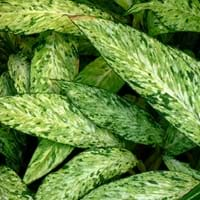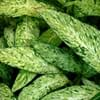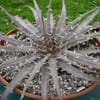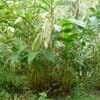Type
Tender Perennial
Grass
Origin
Brazil
Hybrid origin, Europe
Types
Ornamental plant
Not Available
Habitat
Tropical regions
Farms
USDA Hardiness Zone
11-15
Not Available
AHS Heat Zone
12-1
10 - 1
Sunset Zone
H1, H2, 24
1a, 1b, 2a, 2b, 3a, 3b, 4, 5, 6, 7, 8, 9, 14, 15, 16, 17, 18, 19, 20, 21, 22, 23, 24
Habit
Upright/Erect
Clump-Forming
Flower Color
Not Available
Green, Light Green
Flower Color Modifier
Bicolor
Bicolor
Fruit Color
Not Available
Not Available
Leaf Color in Spring
White, Yellow, Green, Light Green, Light Yellow, Ivory
Light Green, Gray Green
Leaf Color in Summer
White, Green, Light Green, Light Yellow, Ivory
Light Green
Leaf Color in Fall
White, Yellow, Green, Light Green, Light Yellow, Ivory
Light Green, Yellow green, Gold
Leaf Color in Winter
Light Green
Not Available
Leaf Shape
oblong or obovate
Linear
Plant Season
Spring, Summer, Fall, Winter
Not Available
Sunlight
Partial shade, Full Shade
Full Sun
Type of Soil
Loam, Sand
Loam
The pH of Soil
Acidic, Neutral
Neutral
Soil Drainage
Well drained
Well drained
Bloom Time
Early Summer, Summer
Late Spring, Early Summer
Tolerances
Drought
Not Available
Where to Plant?
Container
Ground
How to Plant?
Divison, Seedlings
Seedlings
Plant Maintenance
Medium
Medium
Watering Requirements
Medium
Requires a lot of watering, Requires watering in the growing season
In Summer
Lots of watering
Lots of watering
In Spring
Moderate
Moderate
In Winter
Average Water
Average Water
Soil pH
Acidic, Neutral
Neutral
Soil Type
Loam, Sand
Loam
Soil Drainage Capacity
Well drained
Well drained
Sun Exposure
Partial shade, Full Shade
Full Sun
Pruning
Remove damaged leaves, Remove dead branches, Remove dead leaves
Remove damaged leaves, Remove dead branches, Remove dead leaves
Fertilizers
All-Purpose Liquid Fertilizer
All-Purpose Liquid Fertilizer
Pests and Diseases
Red blotch
Red blotch
Plant Tolerance
Drought
Drought
Flowers
Insignificant
Insignificant
Flower Petal Number
Single
Single
Foliage Texture
Bold
Fine
Foliage Sheen
Glossy
Glossy
Attracts
Hummingbirds
Not Available
Allergy
Eye irritation, Nausea, Swelling in mouth
no allergic reactions
Aesthetic Uses
Showy Purposes
Not Used For Aesthetic Purpose
Beauty Benefits
Not Available
Not Available
Environmental Uses
Air purification
Air purification
Medicinal Uses
Not Available
Menstrual Disorders, osteoporosis, Urinary tract problems
Part of Plant Used
Leaves
Whole plant
Other Uses
Air freshner, Showy Purposes
Culinary use, Used for pasture
Used As Indoor Plant
Yes
No
Used As Outdoor Plant
Yes
Yes
Garden Design
Container, Feature Plant, Foundation, Houseplant, Tropical
Edible
Botanical Name
DIEFFENBACHIA seguine
AVENA sativa
In Hindi
dieffenbachia seguine
जई
In German
Dieffenbachie
Haferpflanze
In French
dieffenbachia seguine
Plantes d'avoine
In Spanish
seguine DIEFFENBACHIA
planta de avena
In Greek
Dieffenbachia seguine
φυτό βρώμη
In Portuguese
Dieffenbachia seguine
aveia planta
In Polish
Difenbachia seguine
Owies roślin
In Latin
Caladium
Oat plant
Phylum
Tracheophyta
Tracheophyta
Class
Magnoliopsida
Liliopsida
Genus
Dieffenbachia
Avena
Clade
Angiosperms, Monocots
Angiosperms, Commelinids, Monocots
Subfamily
Aroideae
Pooideae
Number of Species
Not Available
Properties of Dumbcane and Oat plant
Wondering what are the properties of Dumbcane and Oat plant? We provide you with everything About Dumbcane and Oat plant. Dumbcane doesn't have thorns and Oat plant doesn't have thorns. Also Dumbcane does not have fragrant flowers. Dumbcane has allergic reactions like Eye irritation, Nausea and Swelling in mouth and Oat plant has allergic reactions like Eye irritation, Nausea and Swelling in mouth. Compare all the properties and characteristics of these two plants. Find out which of these plant can be used as indoor plant. If you are interested to decorate your house and garden, find out aesthetic uses, compare them and select the plant which will beautify your surrounding. Along with beautification, try comparing medicinal and edible uses of Dumbcane and Oat plant and you can choose the plant having best and most benefits.
Season and Care of Dumbcane and Oat plant
Season and care of Dumbcane and Oat plant is important to know. While considering everything about Dumbcane and Oat plant Care, growing season is an essential factor. Dumbcane season is Spring, Summer, Fall and Winter and Oat plant season is Spring, Summer, Fall and Winter. The type of soil for Dumbcane is Loam, Sand and for Oat plant is Loam while the PH of soil for Dumbcane is Acidic, Neutral and for Oat plant is Neutral.
Dumbcane and Oat plant Physical Information
Dumbcane and Oat plant physical information is very important for comparison. Dumbcane height is 90.00 cm and width 60.00 cm whereas Oat plant height is 60.00 cm and width 10.20 cm. The color specification of Dumbcane and Oat plant are as follows:
Dumbcane flower color: Not Available
Dumbcane leaf color: White, Yellow, Green, Light Green, Light Yellow and Ivory
Oat plant flower color: Green, Light Green
- Oat plant leaf color: Light Green and Gray Green
Care of Dumbcane and Oat plant
Care of Dumbcane and Oat plant include pruning, fertilizers, watering etc. Dumbcane pruning is done Remove damaged leaves, Remove dead branches and Remove dead leaves and Oat plant pruning is done Remove damaged leaves, Remove dead branches and Remove dead leaves. In summer Dumbcane needs Lots of watering and in winter, it needs Average Water. Whereas, in summer Oat plant needs Lots of watering and in winter, it needs Average Water.





